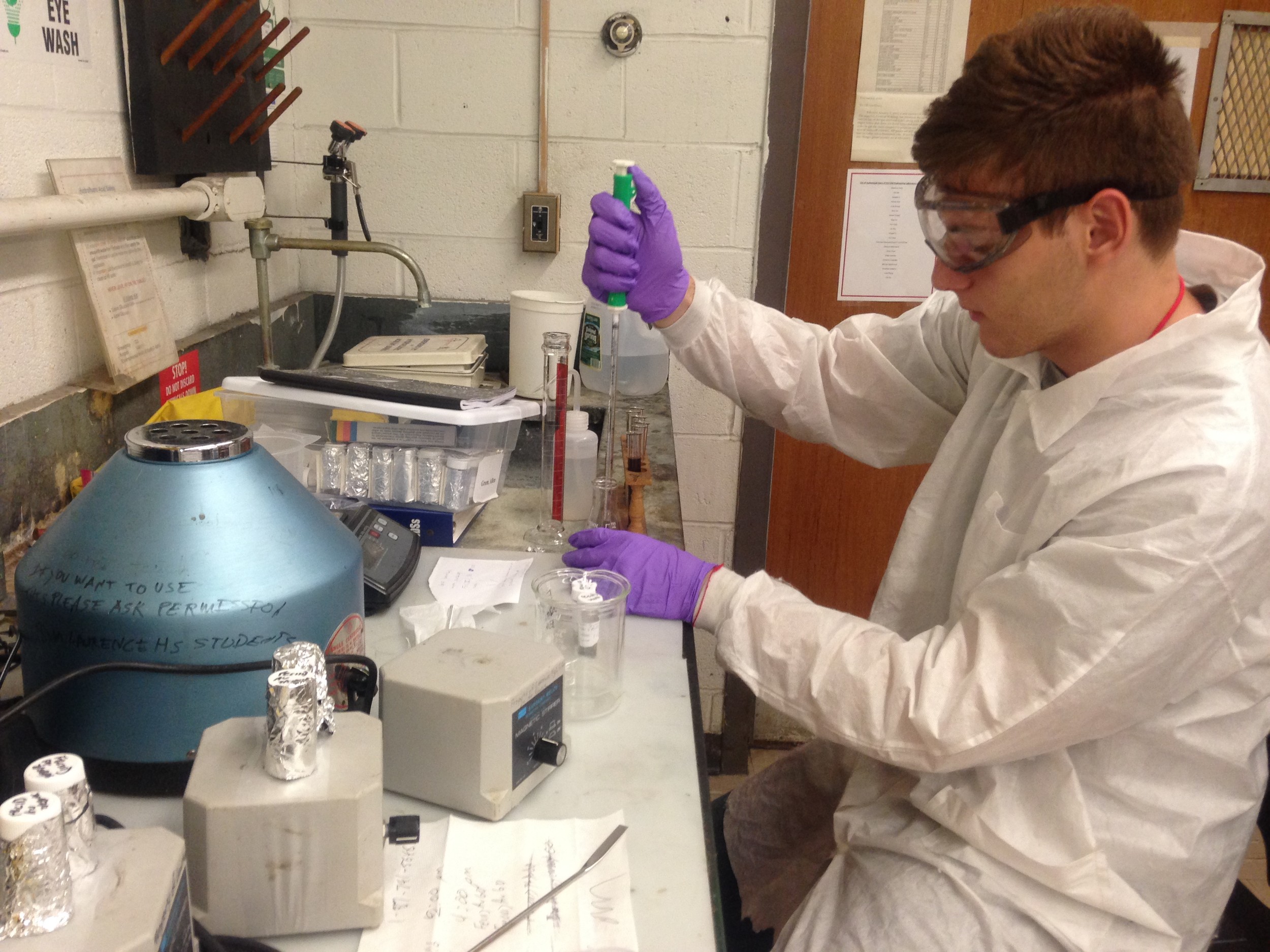Lawrence senior wins science contest grand prize
Aims to apply research to battling cancer
Earlier this year, Allen Green was named Lawrence High School’s valedictorian, and last month he was notified that he was this year’s Grand Award winner in the International Sustainable World Energy, Engineering and Environment Project Olympiad — known as ISWEEEP — in Houston.
“I was kind of in disbelief,” said the North Woodmere resident. “I kind of started shaking on my way up to accept it.” He won $1,500 as well as a $300 Korean Science Serve Award.
Harmony Public Schools, a charter school in Houston, launched ISWEEEP 10 years ago, and it now draws more than 400 of the brightest science, technology, engineering and math — or STEM — students from more than 60 countries around the world. The goal is to inspire young people to explore ways to preserve the earth’s resources in order to create a more sustainable planet.
Green modified graphene, a two-dimensional form of carbon, to improve hydrogen fuel cells, making it possible for them to serve as an alternate fuel source that discharges only water, heat and air.
He began work on the project two years ago, and completed it at Stony Brook University’s Garcia Summer Scholars Program. Dr. Miriam Rafailovich, the program’s director and the co-chair of the school’s Chemical Engineering and Materials Science Department, said she was struck by Green’s love for science.
“A lot of other students want to know what would win in these contests before they decide.” Rafailovich said. “Not Allen. He was interested in doing it for science’s sake. Winning the competition was like the icing on the cake, which is the way it should be.”
Green’s 10th- and 11th-grade chemistry teacher, Rebecca Isseroff, mentored him and accompanied him to the ceremony. “As he walked up, I jumped into the aisle and gave him a big hug,” after hearing his name announced as the big winner, she said, adding that she was proud that his hard work had paid off and he was recognized for his accomplishment.
The ISWEEEP award wasn’t all Green received. He was also awarded a patent disclosure for his work (to determine whether it warrants a patent), and his paper on the grafting of iron particles to graphene was published in the professional journal Materials Research Society Communications — a huge achievement for doctoral student, much less one still in high school.
“Being in a journal like that is something that stays with you for life,” Green said, adding that writing the paper wasn’t the most exhilarating experience. “It gets kind of tedious I had to get a lot of research. and everything has to be perfect, so a lot was just cutting out all the unnecessary things.”
Green said he hopes to do further work focusing on different applications of graphene. “I’ve always had an interest in medicine,” he said. “The iron I attached to the graphene magnetizes it, and because of that it has the potential as a form of cancer treatment.”
Tumors are more susceptible to heat than other cells, and some treatments use injections of magnetic particles to heat the tumor cells until they die, Green explained. He plans to pursue this line of research at Brown University, where he will begin a pre-med program in September. “This could one day be a cheap and easy form of cancer treatment that could save a lot of people.” he said.
That’s a lofty goal, but he has already demonstrated the determination and attitude to be a successful scientist, Isseroff said. “He accepted setbacks so well,” she said. “Sometimes students work hard on one aspect, and if it fails, you have to scrape them off the ground. Allen kept on going, trying to make it work. He’s someone who accepts defeat very well and just bounces back.”
When his senior year ends, Green will return to the Garcia Summer Scholars Program, and serve as a student-mentor to other high school students who are looking to follow in his footsteps.

 66.0°,
Mostly Cloudy
66.0°,
Mostly Cloudy 





